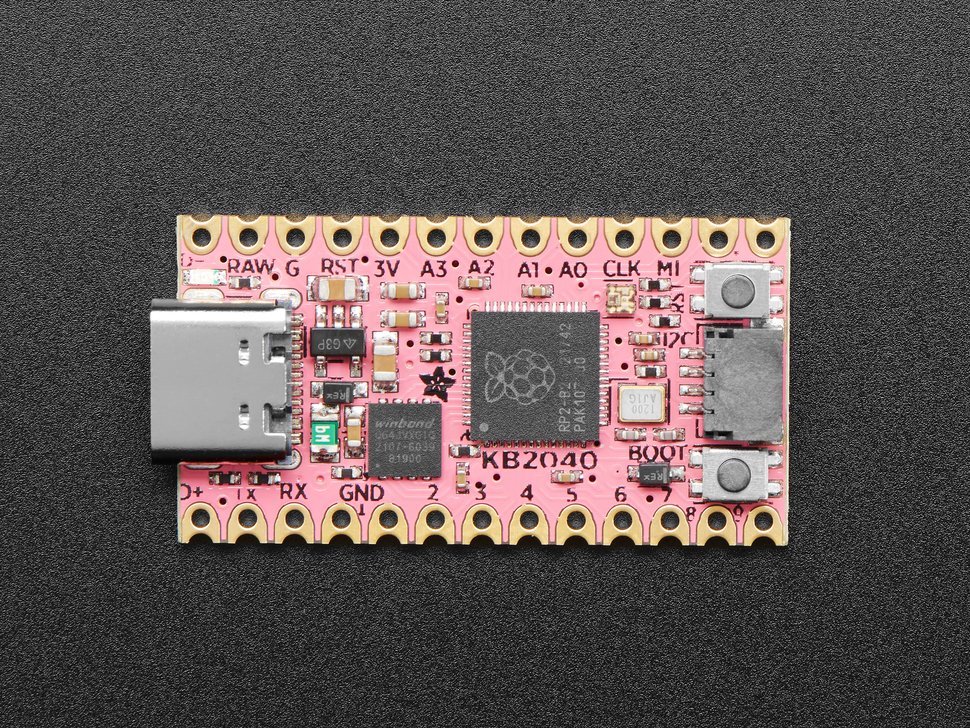Adafruit KB2040
Overview
The Adafruit KB2040 is a small, low-cost, versatile board from Adafruit. It is equipped with an RP2040 SoC, an on-board RGB Neopixel, a USB connector, and a STEMMA QT connector. The USB bootloader allows it to be flashed without any adapter, in a drag-and-drop manner.
Hardware
Dual core Arm Cortex-M0+ processor running up to 133MHz
264KB on-chip SRAM
8MB on-board QSPI flash with XIP capabilities
18 GPIO pins
4 Analog inputs
1 UART peripherals
1 SPI controllers
2 I2C controllers (one via STEMMA QT connector)
16 PWM channels
USB 1.1 controller (host/device)
8 Programmable I/O (PIO) for custom peripherals
On-board RGB LED
1 Watchdog timer peripheral

Fig. 76 Adafruit KB2040 (Image courtesy of Adafruit)
Supported Features
The adafruit_kb2040 board configuration supports the following hardware features:
Peripheral |
Kconfig option |
Devicetree compatible |
|---|---|---|
NVIC |
N/A |
|
UART |
||
GPIO |
||
ADC |
||
I2C |
||
SPI |
||
USB Device |
||
HWINFO |
N/A |
|
Watchdog Timer (WDT) |
||
PWM |
Pin Mapping
The peripherals of the RP2040 SoC can be routed to various pins on the board. The configuration of these routes can be modified through DTS. Please refer to the datasheet to see the possible routings for each peripheral.
Default Zephyr Peripheral Mapping:
UART0_TX : P0
UART0_RX : P1
I2C1_SDA : P2
I2C1_SCL : P3
SPI0_RX : P20
SPI0_SCK : P18
SPI0_TX : P19
Programming and Debugging
Flashing
Using UF2
Since it doesn’t expose the SWD pins, you must flash the Adafruit KB2040 with a UF2 file. By default, building an app for this board will generate a build/zephyr/zephyr.uf2 file. If the KB2040 is powered on with the BOOTSEL button pressed, it will appear on the host as a mass storage device. The UF2 file should be drag-and-dropped to the device, which will flash the KB2040.
